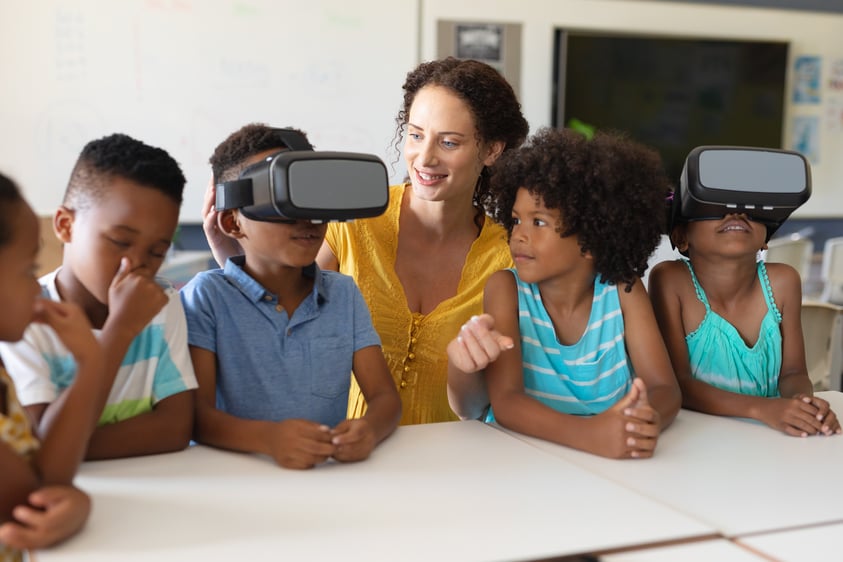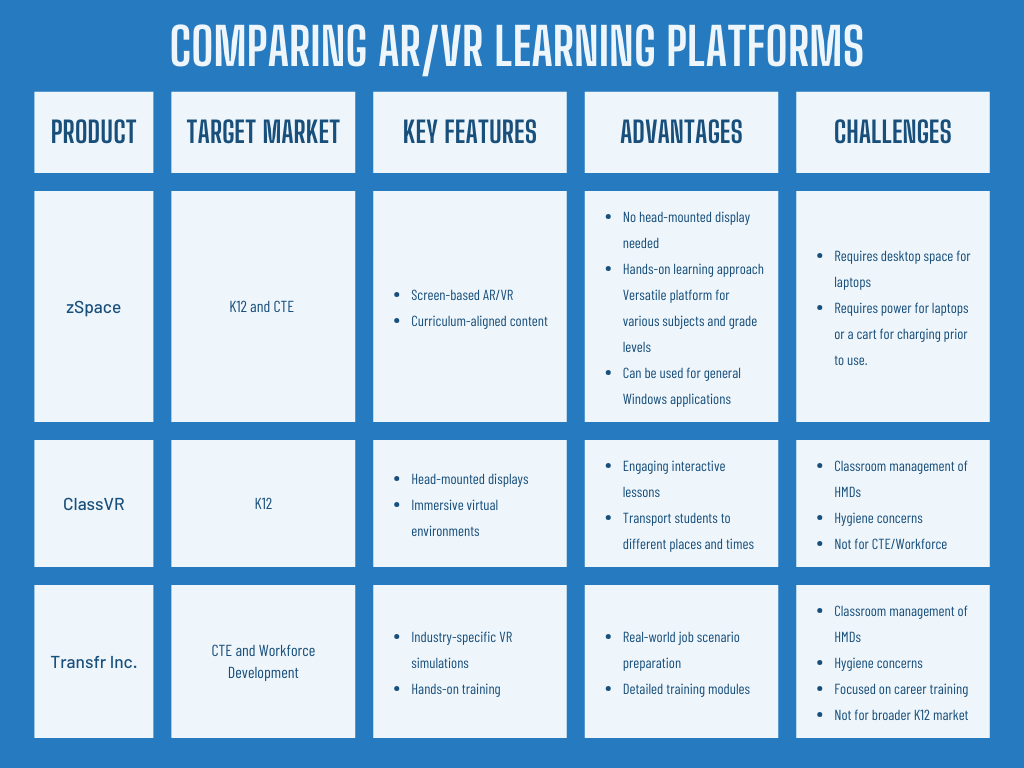Top 3 AR/VR Solutions for Education: A Comparison of zSpace, ClassVR, and Transfr Inc.
Written by
Retha Woolfolk, Ph.D.
Principal (retired) M.A. Jones Elementary School
School Featured in 2024 National Education Technology Plan

The Rise of AR/VR in Education
The integration of Augmented Reality (AR) and Virtual Reality (VR) into the educational landscape has been nothing short of transformative. These immersive technologies offer dynamic and interactive learning experiences that engage students in ways traditional methods cannot. From virtual field trips to complex scientific simulations, AR/VR is making abstract concepts tangible and accessible.
As educators strive to enhance student achievement, satisfy board and community expectations, and make a meaningful impact, the adoption of AR/VR solutions has become increasingly compelling. These tools not only foster deeper understanding but also prepare students for the technological advancements they will encounter in their future careers.
zSpace: Bridging K12 and CTE Markets
zSpace stands out in the AR/VR educational space by offering a comprehensive solution that caters to both K12 and Career and Technical Education (CTE) markets. Unlike many solutions that focus on one specific area, zSpace provides a versatile platform that can be used across various subjects and grade levels.
One of the key advantages of zSpace is its use of augmented reality in a screen-based environment, which eliminates the need for head-mounted displays. This makes it more accessible and less cumbersome for younger students while still offering a rich, immersive experience. zSpace’s curriculum-aligned content and hands-on learning approach make it a powerful tool for improving test results and enhancing district reputation.
ClassVR: Engaging Students through Head-Mounted Displays
ClassVR offers a different approach by utilizing head-mounted displays to create immersive virtual environments. These devices are designed to engage students in interactive lessons that can transport them to different places and times, making learning more vivid and memorable.
While ClassVR excels in creating engaging and interactive experiences, it is primarily focused on the K12 market. The head-mounted nature of the device may also present some logistical challenges in terms of classroom management and hygiene. However, for districts looking to make a significant impact on student engagement and achievement, ClassVR provides a compelling and innovative solution.
Transfr Inc.: Focused on Career Training
Transfr Inc. specializes in using VR to provide career training and workforce development. Their immersive simulations are tailored to specific industries, offering hands-on training that prepares students for real-world job scenarios. This makes Transfr a valuable resource for CTE programs aiming to equip students with practical skills that meet industry standards.
While Transfr’s focus on career training is highly beneficial for older students and those in vocational programs, it does not address the broader K12 market. This specialization, however, allows Transfr to offer highly detailed and industry-specific training modules that few other solutions can match.
Choosing the Right AR/VR Solution for Your Educational Needs
Selecting the right AR/VR solution depends on your specific educational goals and the needs of your students. zSpace offers a versatile platform that bridges both K12 and CTE markets, making it a comprehensive choice for districts aiming to enhance student achievement across various subjects and grade levels. Its screen-based approach also makes it more accessible and less intrusive.
ClassVR provides an engaging and immersive experience through head-mounted displays, making it an excellent choice for districts focused on increasing student engagement in the K12 market. However, it may require additional considerations for classroom management.
Transfr Inc. offers specialized career training solutions that are ideal for CTE programs looking to provide hands-on, real-world skills training. While it may not cater to the broader K12 market, its industry-specific focus makes it a valuable tool for preparing students for the workforce.
Ultimately, the best AR/VR solution is one that aligns with your educational objectives, budget, and the unique needs of your students. By carefully evaluating the strengths and limitations of each option, you can make an informed decision that maximizes the impact of AR/VR in your educational setting.
